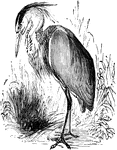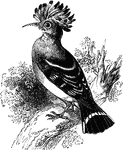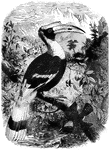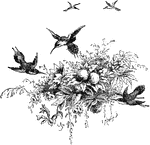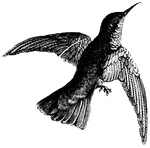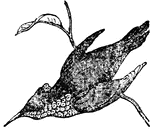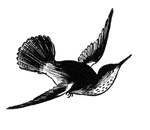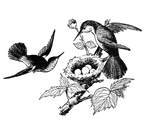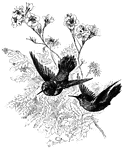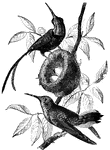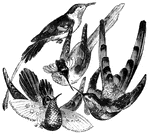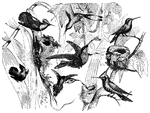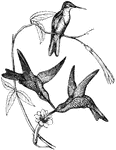134 illustrations of birds including: hammer, harpy, harrier, hawk, heron, hoopoe, house-martin, humming bird, ibijau, ibis, and indigo bird
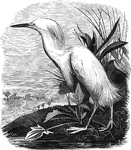
Great White Heron
White, often with a yellowish tinge, the great white heron of America closely resembles its European…
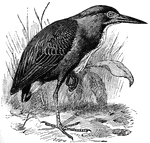
Green Heron
The Green Heron (Butorides virescens) is a small wading bird in the Ardeidae family of herons, and is…
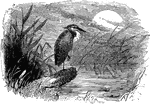
Night Heron
"Nyctiardea grisea naevia. Black-crowned Night Heron. Qua-bird. Squawk. Crown, scapulars and interscapulars…
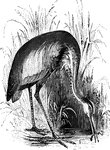
Purple Heron
"twenty-nine inches long; slate-gray above; dark maroon and slate-gray beneath ; found in the warmer…
The Grey Heron
"The Grey Heron in full flight. In the heron the wings are deeply concave, and unusually large as compared…
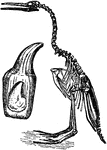
Hesperornis
Hesperornis is an extinct genus of flightless aquatic birds that lived during the Santonian to Campanian…

Hoatzin
"The Hoatzin (Opisthocomus cristatus) is curious and highly specialized. "The body is long and thin,…
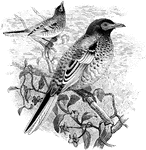
Warty-faced Honey Eater
"Meliphaga phrygia, the Warty-faced Honey-Eater, is yellow and black, spotted and barred below." A.…
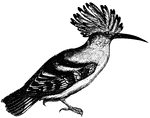
Hoopoe
The hoopoes are easily recognized from the double range of plumes which form an arched crest on their…
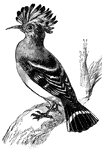
Hoopoe
The hoopoes are easily recognized from the double range of plumes which form an arched crest on their…

Hoopoe
Widely distributed over Africa, Asia, and Europe, the hoopoe has a distinctive crest of feathers on…
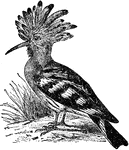
Hoopoe
An old world bird that is distinguished by it's vibrant plumage and downward-curving bill, and bright…

Hoopoe
"Diagram showing the tracts where the principal growth of feathers occurs (Upupa epops). The dotted…

Hoopoe
"Upupa epops, not unfrequently visits Britain, where it has nested on several occasions; it breeds from…
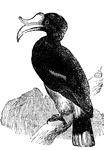
Hornbill
The hornbill family are remarkable for the very large size of the beak, and the large protuberance that…
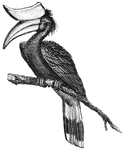
Hornbill
The hornbill family are remarkable for the very large size of the beak, and the large protuberance that…
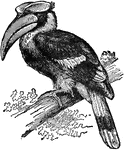
Hornbill
"Hornbills are a remarkable group of birds confined to Southern Asia and Africa, akin to the kingfishers…
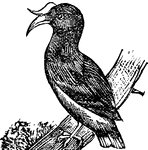
Hornbill
A large bird, found in Africa and Asia, having a large bill curved downward, on which is a process resembling…
!["They walk with difficulty and their flight is clumsy. [They are] native to Malaysia, India and Sumatra.](https://etc.usf.edu/clipart/51800/51896/51896_cc_hornbill_mth.gif)
Concave-Casqued Hornbill
"They walk with difficulty and their flight is clumsy. [They are] native to Malaysia, India and Sumatra.
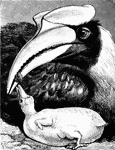
Female Hornbill Laying Down Feeding Her Young
"Dichoceros bicornis of India and the Malay countries has a large yellowish-red casque, hallowed and…
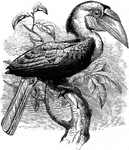
Plait-billed Hornbill
The Rytidoceros undulatus, Plait-billed Hornbill, or Wreathed Hornbill, has black wings, belly, and…
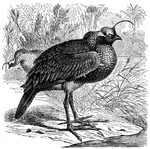
Horned Screamer (Palamedea Cornuta)
The Screamers are inhabitants of South America. They live isolated, in pairs, and are mild and peaceful…
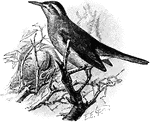
Wing-Banded Hornero
The Wing-Banded Hornero (Furnarius figulus) is a bird in the Furnariidae family of ovenbirds.
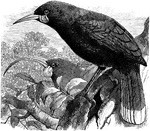
Huia
"Heteralocha acutirostris, the New Zealand Huia, the female has a remarkably long, curved bill, that…
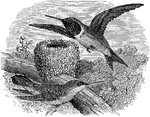
Ruby-throated Humming-bird
"Trochilus colubris. Ruby-throated Humming-bird. Tail forked, its feathers all narrow and pointed; no…
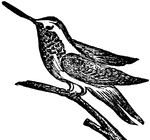
Hummingbird
A very small bird remarkable for the metallic brilliancy of its plumage, and for its swift motion and…
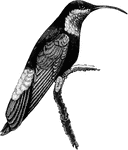
Hummingbird
"The Eulampis jugularis, or Hummingbird, has brilliant coloration almost defies description, the most…
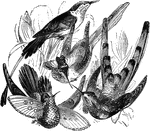
Hummingbird Species
Hummingbird species (Ornismya): Gould's hummingbird (O. gouldii), Bar-tailed hummingbird (O. sappho),…
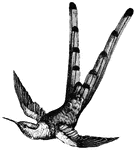
Bar-Tailed Hummingbird
The nest of the hummingbird is a masterpiece. It is about half the size of an apricot.

Long Tailed Hummingbird
"Aithurus polytmus, the Long-tailed Hummingbird, peculiar to Jamaica, the two tail-feathers next to…
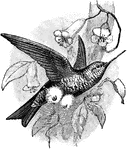
Coppery-Bellied Puffleg
The Coppery-Bellied Puffleg (Eriocnemis cupreoventris) is a hummingbird in the Trochilidae family.
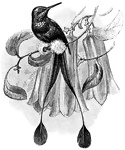
Racket-Tailed Hummingbird
Spathura underwoodi. The Spathura is a "remarkable genus of Trochilidae, containing hummingbirds with…
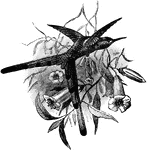
Red-Tailed Comet
A species of hummingbird, the Red-Tailed Comet (Sappho sparganura) is native to South America.
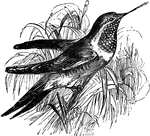
Ruby-Throated Hummingbird
The ruby-throated hummingbird (Archilochus colubris) is a bird with a long beak and rapid wings. This…
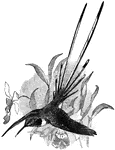
Peruvian Sheartail
The Peruvian Sheartail (Thaumastura cora) is a hummingbird in the Trochilidae family of hummingbirds.
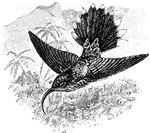
White-Tipped Sicklebill Hummingbird
The White-Tipped Sicklebill (Eutoxeres aquila) is a bird in the Trochilidae family of hummingbirds.
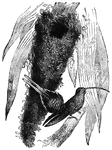
Supercolious Hummingbird
The supercolious hummingbird, noted for it's unusually large nest. It is native to Brazil.

Sword Bearing Hummingbird
A bird with a long, skinny bill. The bill is used to probe long tubular flowers for food.
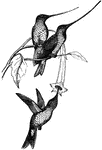
Hummingbirds
A group of humming birds with particularly long and narrow beaks, well-adapted for sipping nectar from…

Hummingbirds
Four humming birds, two of which are resting on a branch, while the other two cavort in the air above.

Hyacinthine Gallinule
Also known as the Sultana-fowl. "When eating, sometimes is stands on one foot and uses the other as…
